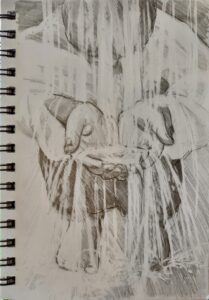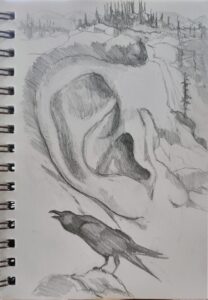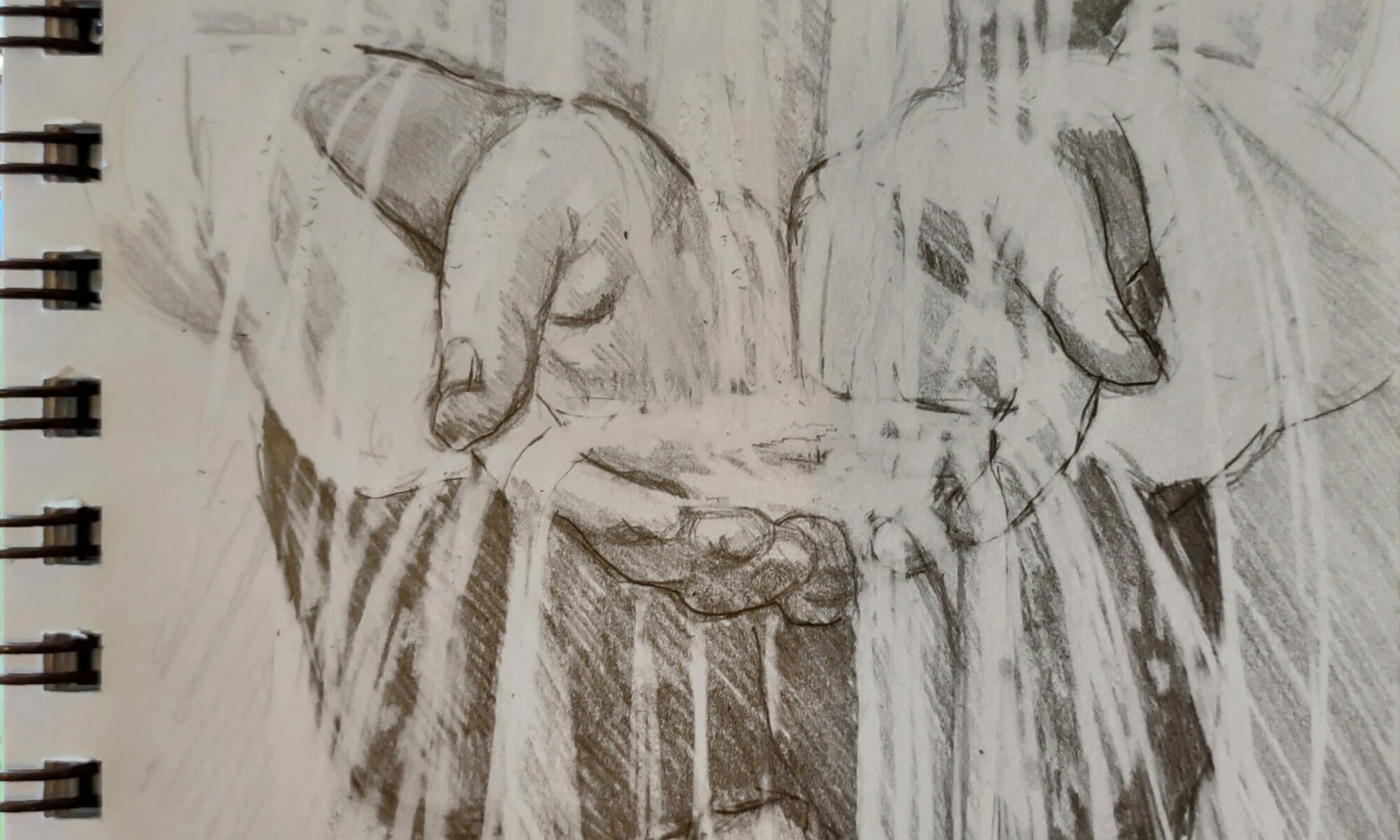
A few weeks ago, I wrote on the highly-forgettable nature of AI-generated art. That got a response from painter Carey Corea. He’s involved in the Art & Spirit Forum. Would I be interested in speaking to their group online? “Of course!” I said. That’s this Thursday, February 9, from 6:30-8 PM. Admission is free but you must register through Eventbrite.
Acts 18:3 tells us that Paul was a tent maker by trade (in an era when they were massive structures, not little nylon things). I’m a painter by trade, and my landscape paintings are no more ‘religious’ than Paul’s tents were.

Our beliefs inform our work
Still, our beliefs and behaviors can’t help but inform our work. This is why I have a difficult time with Pablo Picasso’s paintings; the same misogyny that characterized his relationships with women bleeds through his canvases. How different that is from the slightly-older Henri Matisse, who was equally obsessed with the female form, but in a positive way.
Volumes have been written Picasso’s and Matisse’s relationships. That covers the ‘who’ and ‘what’ but it only scratches the surface on the ‘why.’ Why does one artist end up victimizing women and another, like Sir Stanley Spencer, end up the victim? Our personal histories are too complex to write off as the result of family, background, genes, or experience, although all those things are factors.

AI doesn’t have beliefs
We’ve all seen examples of AI-generated text that reads like polished, human-written copy. Kept within narrow parameters, AI can do a passable job of assembling data into pleasing paragraphs. But that’s where it ends.
Last night, I asked ChatGPT some questions that another human being would have no trouble with, things like, “Do you love me?” “What is love?” and my favorite, “How do you know I’m a sentient human being?”
Elizabeth Barrett Browning has nothing to worry about.
If we’ve met in person, you know I’m a sentient human being because… well, you just know. (It’s also true if you’ve only seen me on a screen or read this blog, albeit to a lesser extent.) That’s the soul talking, and it’s the part AI-generated art doesn’t get. You may not believe in God, but it’s hard to deny that human beings have souls. Otherwise, our flesh bags would not respond as they do to our contacts with others. We experience this indefinable reaction both through intense connections, such as with a lover or child, and in transitory experiences like paying the cashier at McDonalds.

If anything, AI validates traditional religion. Christian doctrine teaches that we are triune beings, composed of body, soul, and spirit. The body is our physical self; the soul is our humanity; the spirit is that part of us that’s in contact with God. On the surface it appears that we differ from AI because we have a body, but it’s our soul and spirit that differentiate us from machines.
I’m going to talk about AI-generated art, including examples made by photographer Ron Andrews, which are frankly more interesting than mine were. I’m also going to talk about some of my own work, the things that I don’t generally show. That starts with my sketchbooks. I hope you join us!

Art & Spirit Forum
Thursday, February 9
6:30-8 PM.
Admission is free but you must register through Eventbrite.
Reserve your spot now for a workshop in 2025:
- Advanced Plein Air Painting, Rockport, ME, July 7-11, 2025.
- Sea and Sky at Acadia National Park, August 3-8, 2025.
- Find Your Authentic Voice in Plein Air, Berkshires, MA, August 11-15, 2025.
- Immersive In-Person Fall Workshop, Rockport, ME, October 6-10, 2025.

